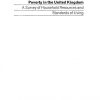A Toolbox for the Application of the Rules of Targeting 1st Edition by Tetyana Tanya Krupiy ISBN 1443887099 9781443887090
$50.00 Original price was: $50.00.$25.00Current price is: $25.00.
A Toolbox for the Application of the Rules of Targeting 1st Edition by Tetyana (Tanya) Krupiy – Ebook PDF Instant Download/Delivery: 1443887099, 978-1443887090
Full download A Toolbox for the Application of the Rules of Targeting 1st Edition after payment
Product details:
ISBN 10: 1443887099
ISBN 13: 978-1443887090
Author: Tetyana (Tanya) Krupiy
A Toolbox for the Application of the Rules of Targeting 1st Edition: How military commanders interpret the rules of targeting impacts not only on whether civilians and civilian objects are harmed in the course of a military operation, but also on the scale of harm that ensues. Commentators have queried whether military commanders observed the law even when parties to a conflict acted in accordance with mandates to protect civilians, as was the case when a coalition of states bombed targets in Libya in 2011. However, limited guidance is publicly available on how military commanders apply these rules on the battlefield. In order to allow military commanders to exercise judgment in determining what steps they are required to take to spare civilians in a specific set of circumstances, the rules of targeting are formulated in an open-ended fashion, which complicates one’s ability to evaluate whether a particular military operation complies with the law. By examining case studies ranging from Operation Desert Storm in 1991 to Operation Protective Edge in 2014, this book addresses lacunae in current scholarship. It puts forward principles which capture how military commanders deliberate while interpreting what the rules of targeting require in particular scenarios. International humanitarian law, this book contends, places a duty on attackers to assume risk in order to mitigate danger to civilians. Drawing on the field of psychology, this study provides an explanation of how military commanders assess when circumstances do not permit them to inform civilians about a forthcoming attack.
A Toolbox for the Application of the Rules of Targeting 1st Edition Table of contents:
Chapter One: Introduction
Chapter Two: How Military Commanders Go About Planning a Military Operation
- The Nature of the Military Goals
- The Building Blocks of a Military Operation
- Intelligence Collection
- Means of Warfare and Employment of Firepower
- Movement and Manoeuvre
- Additional Measures Commanders may take to Reduce Harm to Civilians
- Force Protection
- Conclusions
Chapter Three: An Introduction to the Rules of Targeting
- The Principle of Distinction
- The Rule of Target Verification
- The Principle of the Least Feasible Damage
- The Principle of Proportionality
- An Obligation of Risk Assumption in IHL
- The Duty to Issue an Advance Warning of the Attack
- To Whom the Rules of Targeting are Addressed
- Conclusions
Chapter Four: The Practical Application of the Rules of Targeting: A Legal Ambiguity
- The Rule of Target Verification
- The Principle of the Least Feasible Damage
- The Principle of Proportionality
- The Duty to Issue an Advance Warning of the Attack
- A Theoretical Explanation for the Ambiguity in the Law
- The Hypothesis
- Conclusions
Chapter Five: Drawing the Line: The Degree of Certainty Required by the Principle of Distinction
- Why There Is So Much Uncertainty around the Required Degree of Certainty
- Investigating the Degree of Certainty Required by the Principle of Distinction
- Target Characteristics versus the Degree of Required Certainty
- The Interplay between Operational Factors
- Conclusions
Chapter Six: A Toolbox for the Application of the Rule of Target Verification
- An Examination of how Military Commanders Balance the Three Elements
- A Framework for the Application of the Rule
- Conclusions
Chapter Seven: A Toolbox for the Application of the Principle of the Least Feasible Damage
- Constructing a Scale for the Spectrum of Harm and Military Advantage
- Analysis of State Practice
- The Relationship between the Three Elements
- Conclusions
Chapter Eight: The Duty to Issue an Advance Warning of the Attack: Perspectives from Psychology
- The Mechanism behind Making an Assessment when Issuing a Warning of an Attack may “Seriously Compromise” the Chances on Winning
- The Role of the Military Commander’s Personality
- The Influence of Mental Templates on the Decision-Making of a Commander
- Insights regarding how Military Commanders Apply the Goldstone’s Formulation of the Rule
- Explaining the Influence of Policy Considerations using the “Social Amplification Theory”
- Conclusions
Chapter Nine: Conclusion
People also search for A Toolbox for the Application of the Rules of Targeting 1st Edition:
a toolbox for department chairs
rule toolbox
in the toolbox
joint targeting toolbox
knowledge-to-action (kta) framework
You may also like…
Business & Economics - Management & Leadership
Uncategorized
The Laws of Etiquette Short Rules and Reflections for Conduct in Society 1st Edition A Gentleman
Uncategorized
Uncategorized
Uncategorized
Romance - Contemporary Romance
Romance - Paranormal Romance
The Firebird Chronicles 1 Rules of Redemption 1st Edition T A White Ta White
Romance - Other Romance Categories
Psychology - Psychotherapy












